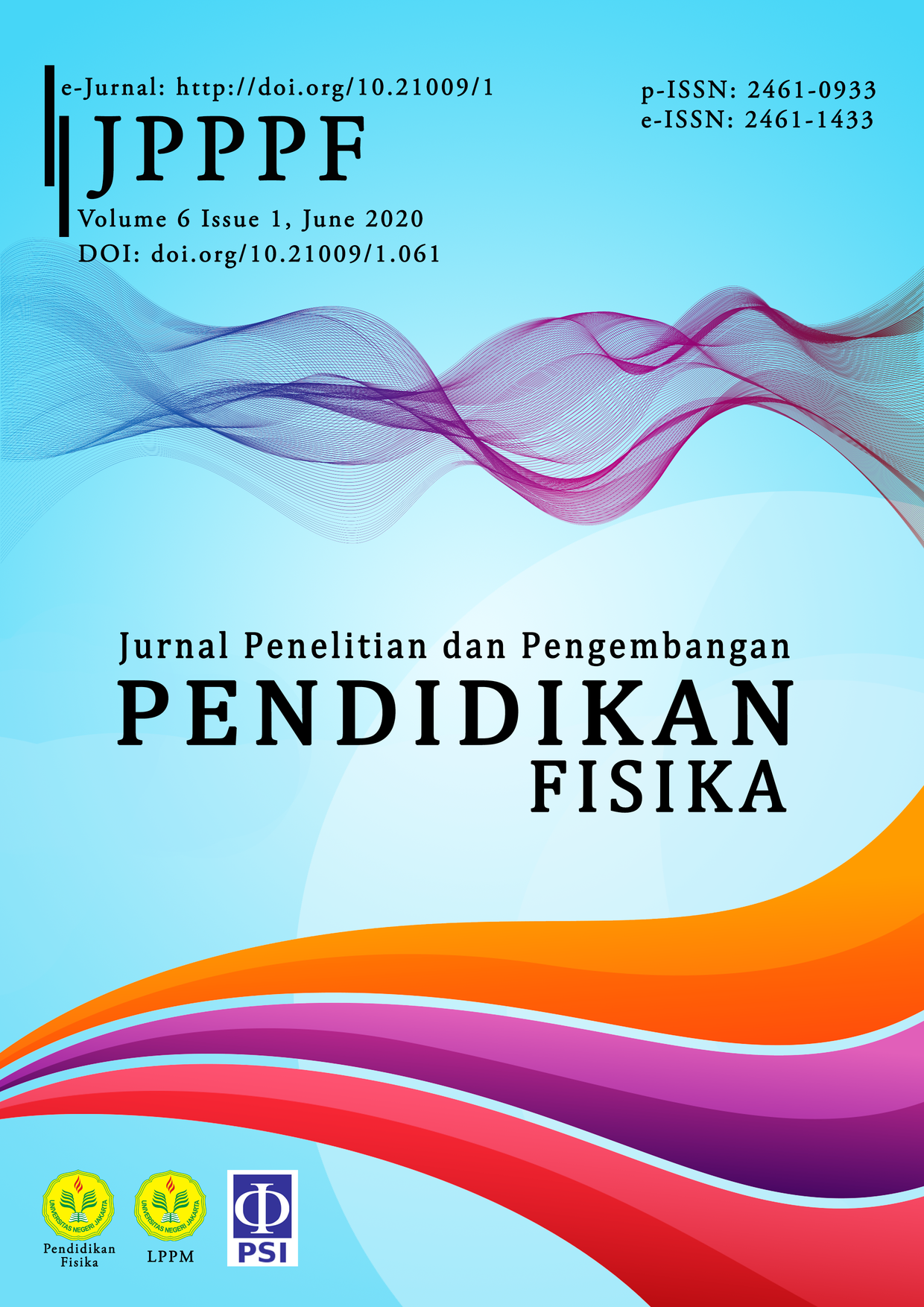Instructional Technology: Teacher’s Initial Perception of TPACK in Physics Learning
DOI:
https://doi.org/10.21009/1.06115Keywords:
TPACK, teacher’s initial perception, Educational 4.0, instructional technologyAbstract
The demands of learning in the industrial era 4.0 currently have an impact on innovative learning, learning design with the Technology Pedagogic and Content Knowledge (TPACK) framework provides a useful framework for teachers and researchers to integrate technology in learning activities. The TPACK (Technological Pedagogic Content Knowledge) framework is the latest issue that is relevant to 21st Century learning concepts. This study aims to examine the extent of teacher responses in utilizing learning information sources using TPACK priority scales in encouraging student learning abilities. This study used a quasi-experimental study analytic test of the randomized design with questioner testing. The concept of the approach is through two methods, namely, qualitative and quantitative approaches. The research subjects were carried out randomly with a target sample of physics teachers in the category of new instructors from several provinces in Indonesia, with 33 active respondents in their fields. Based on the results of the study, TPACK is an essential point to give the powerful managing of educational learning and field studies show that the teacher states that some obstacles are experienced when integrating technology in learning physics at school to make sure instructional technology.
References
Baker, AJ & Piotrkowski, CS 1996, Parents and Children through the School Years: The Effects of the Home Instruction Program for Preschool Youngsters.
Baran, M, Maskan, A, & Yasar, S 2018, ‘Learning Physics through Project-Based Learning Game Techniques’, International Journal of Instruction, vol. 11, no. 2, pp. 221-34.
Chalkiadaki, A 2018, ‘A Systematic Literature Review of 21st Century Skills and Competencies in Primary Education’, International Journal of Instruction, vol. 11, no. 3, pp. 1-16.
Emerson, L, Fear, J, Fox, S, & Sanders, E 2012, ‘Parental engagement in learning and schooling: Lessons from research’, a report by the Australian Research Alliance for Children and Youth (ARACY) for the Family–School and Community Partnerships, Bureau, Canberra.
Gokdere, M 2012, ‘A Comparative Study of the Attitude, Concern, and Interaction Levels of Elementary School Teachers and Teacher Candidates towards Inclusive Education’, Educational Sciences: Theory and Practice, vol. 12, no. 4, pp. 2800-06.
Gutman, LM & Midgley, C 2000, ‘The role of protective factors in supporting the academic achievement of poor African American students during the middle school transition’, Journal of youth and adolescence, vol. 29, no. 2, pp. 223-49.
Hechter, RP 2012, ‘Pre-service teachers’ maturing perceptions of a TPACK-framed signature pedagogy in science education’, Computers in the Schools, vol. 29 no. 1-2, pp. 53-69.
Hechter, RP, Phyfe, LD, & Vermette, LA 2012, ‘Integrating technology in education: Moving the TPCK framework towards practical applications’, Education Research and Perspectives (Online), vol. 39, p. 136.
Henderson, AT & Berla, N 1994, A new generation of evidence: The family is critical to student achievement.
Henderson, AT, & Mapp, KL 2002, A New Wave of Evidence: The Impact of School, Family, and Community Connections on Student Achievement, Annual Synthesis.
Kafyulilo, A, Fisser, P, & Voogt, J 2016, ‘Factors affecting teachers’ continuation of technology use in teaching’, Education and Information Technologies, vol. 21, no. 6, pp. 1535-54.
Koh, JHL, Chai, CS, & Lee, MH 2015, ‘Technological pedagogical content knowledge (TPACK) for pedagogical improvement: Editorial for special issue on TPACK’, The Asia-Pacific Education Researcher, vol. 24, pp. 459-62.
Mairisiska, T, Sutrisno, S, Asrial, A 2014, ‘Pengembangan Perangkat Pembelajaran Berbasis TPACK pada Materi Sifat Koligatif Larutan untuk Meningkatkan Keterampilan Berpikir Kritis Siswa’, Edu-Sains: Jurnal Pendidikan Matematika dan Ilmu Pengetahuan Alam Universitas Jember, vol. 3, no. 1, p. 59664.
Masrifah, M, Setiawan, A, Sinaga, P, & Setiawan, W 2018, ‘Profile of senior high school in-service physics teachers’ technological pedagogical and content knowledge (TPACK)’, Journal of Physics: Conference Series, vol. 1097, no. 1, p. 012025.
Mercier, EM, & Higgins, SE 2013, ‘Collaborative learning with multi-touch technology: Developing adaptive expertise’, Learning and Instruction, vol. 25, pp. 13–23.
Musiek, FE, & Baran, JA 2018, The auditory system: Anatomy, physiology, and clinical correlates. Plural Publishing.
Phillips, KP 2014, The Emerging Republican Majority: Updated Edition, Princeton University Press.
Supriadie, D, & Darmawan, D 2012, Komunikasi Pembelajaran, Remaja Rosdakarya, Bandung.
Trilling, Bernie, & Fadel, C 2009, 21st Century Skills: Learning for Life in Our Times, John Wiley & Sons, 978-0-47-055362-6.
Wiggins, G & McTighe, J 2011, The Understanding by Design guide to creating high-quality units, VA: ASCD, Alexandria.











